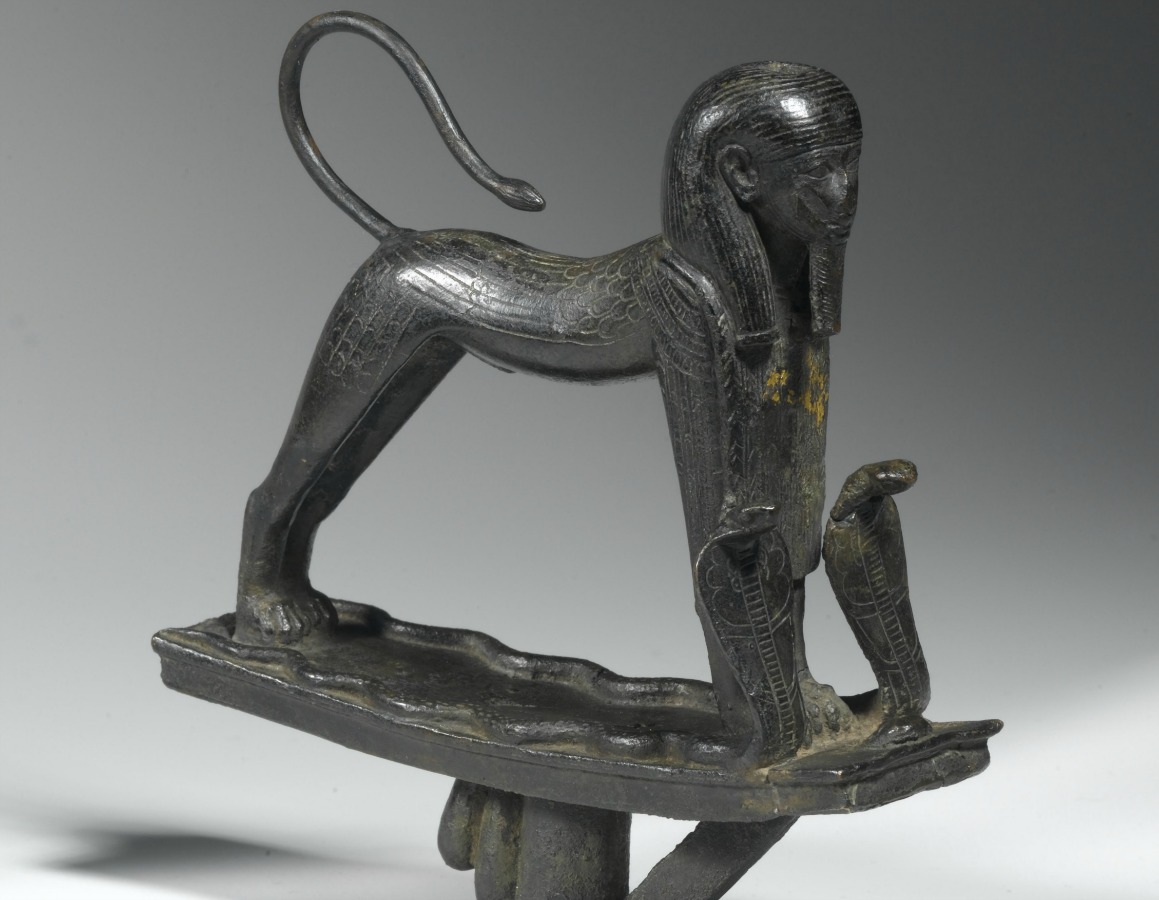Domesticating Cats At The Dallas Museum Of Art
ArtandSeek.net October 28, 2016 13Cats have invaded a gallery at the Dallas Museum of Art – although they’re not likely to wander off or chase any mice. The current exhibition, called ‘Divine Felines,’ is all about how ancient Egyptians viewed cats. It features some 80 artifacts – including sculptures and jewelry — from the Brooklyn Museum’s celebrated Egyptian collection. Local All Things Considered host Justin Martin sat down with Art & Seek’s Jerome Weeks to ponder kittens, gods and mummies.
Jerome, full disclosure: I have two cats.
Which speaks to an objection I have about the DMA’s show, ‘Divine Felines.’ The very first wall text states, as fact, that cats were first domesticated in ancient Egypt. Actually, they may have been ‘domesticated’ thousands of years before any ancient Egyptian kingdom — back in 9000 B.C. But in any case, any cat owner knows, no one’s ever really domesticated a cat. I’ve even read one animal behaviorist who concluded, “A cat is domesticated only when the cat wants to be.”
But I think this whole issue of domestication is relevant because although the show is called ‘Divine Felines,’ it’s really about the ancient Egyptians’ personal connections to cats. I mean, what’s the one fact most people know about ancient Egypt and cats?
They worshiped them.
OK, so there are a couple of striking cat idols (see top image), but they’re not exactly towering. What ‘Divine Felines’ actually is is an intimate show. It’s full of little, delicate things like amulets and jewelry and bits of furniture.

Figure of a cat – wood, gilded gesso, bronze, copper, pigment, rock crystal, glass. 305 B.C. – 1st century B.C.
Even the little sarcophagus or the mummy case for the pet cat.
I enjoyed the show. As you say, some of the pieces are beautifully made. But I wished we could have learned even more about what was daily life like with a cat back then? I realize we’re not likely to find a diary entry from 1000 B.C. saying, ‘This morning, little Mittens scratched me, so I’m reallllly all angry with her right now.’ But in the depictions here – the amulets, the hieroglyphs – we never really see humans and cats interacting.
Plus, it was true that killing a cat in Egypt could get you punished by death. That says a lot.

Striding sphinx, bronze, 945-712 B.C.
Because some of these items are so small and delicate, I also wish the DMA had those magnifying lenses or portals you see at aquariums? You can slide them on the glass or plastic case – they won’t scratch them – but theses lenses can give you a really close-up look at an art object. Certainly closer than you could normally get in a museum.
Why do you think the DMA did that? It splits the show in two – the major part is about cats, the later part about mummies.
Also, frankly, it definitely makes this show something more than the museum equivalent of a cat video.

Weight in the form of a cat – bronze, silver, lead, 305-30 B.C.









